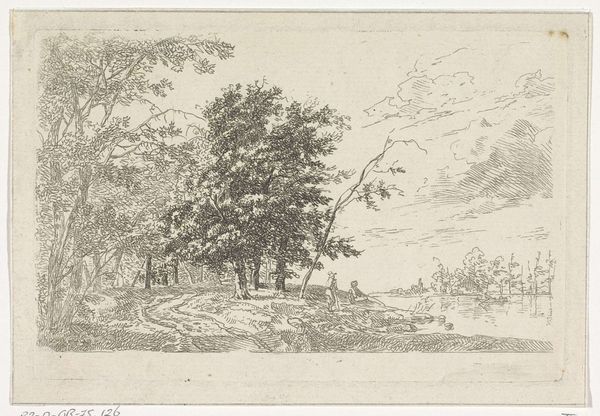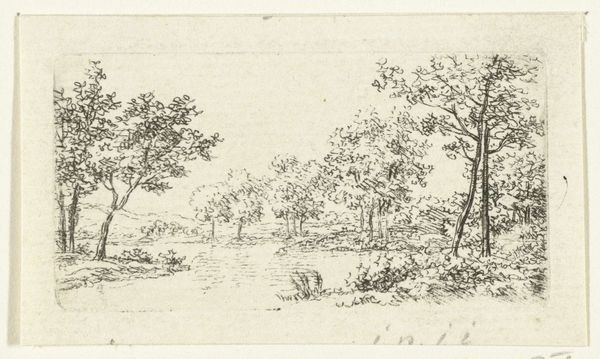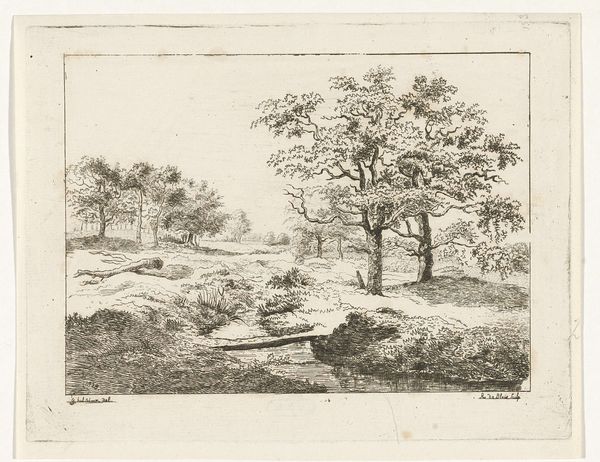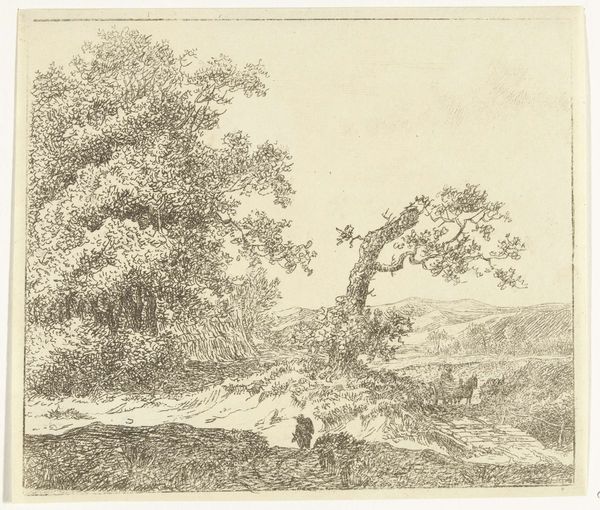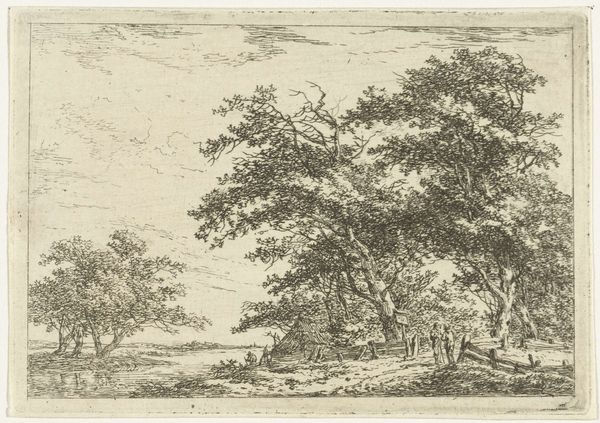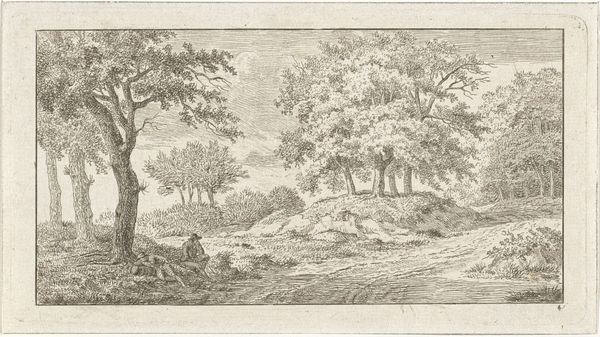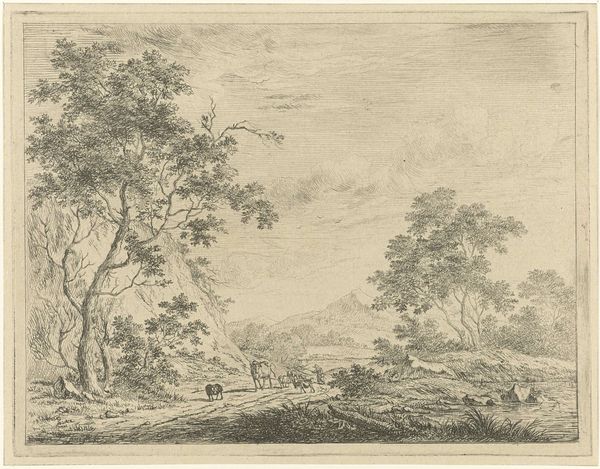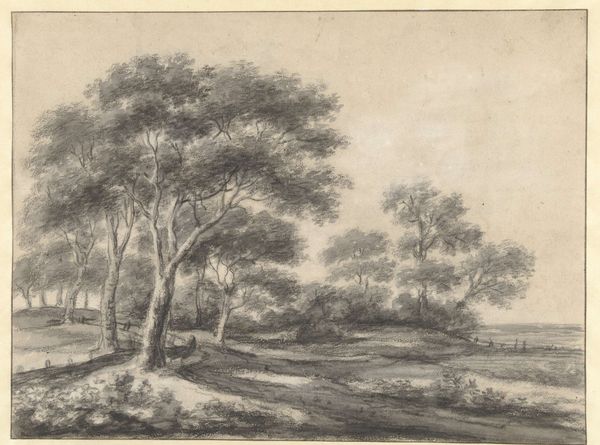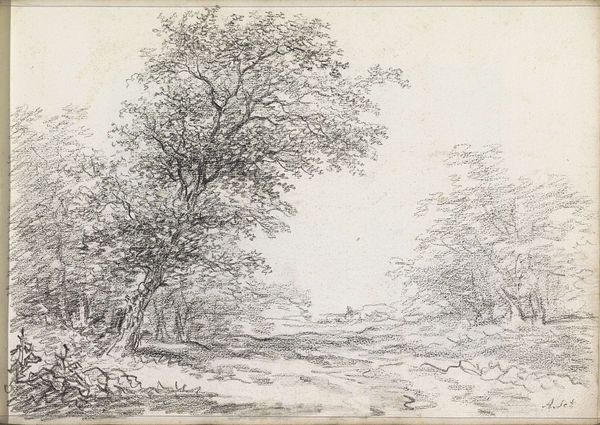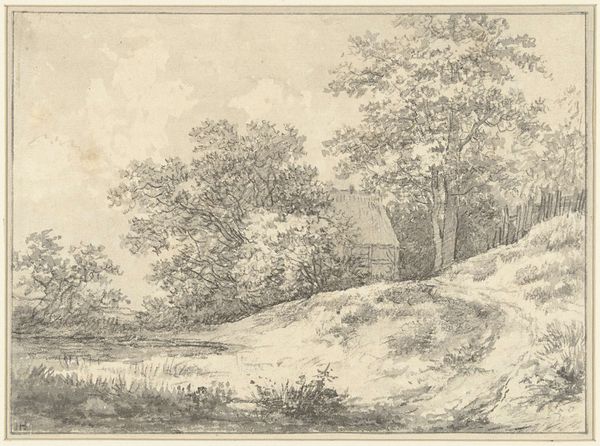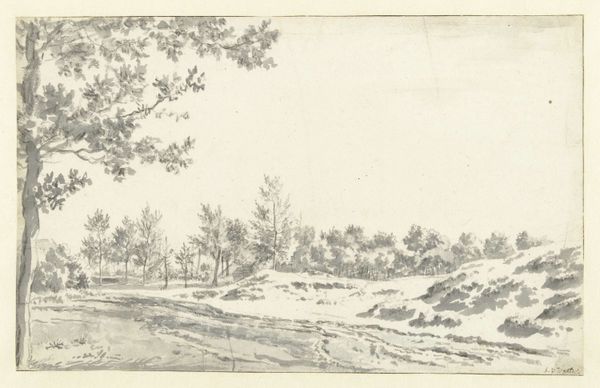
drawing, pencil
#
drawing
#
dutch-golden-age
#
landscape
#
form
#
pencil
#
line
#
realism
Dimensions: height 174 mm, width 261 mm
Copyright: Rijks Museum: Open Domain
Curator: I'm immediately struck by the delicacy of this drawing. The limited tonal range and the precision of the pencil work create an incredibly peaceful, almost ethereal atmosphere. Editor: That's an interesting observation. This piece is called "Boomrijk landschap met rivier", meaning "Wooded Landscape with River" in English. Jacob Akersloot created it sometime between 1684 and 1724. Looking at its status as a pencil drawing firmly situates it within a practice deeply embedded in the evolving landscape conventions of the Dutch Golden Age. Curator: Exactly. I’m drawn to how Akersloot renders form primarily through line, and the varying pressure on the pencil point creates such subtle shifts in value. It speaks to a meticulousness, a devotion to representing the natural world using only the humblest of materials. Was drawing primarily a preparatory process? Editor: Often, yes. Within the context of Dutch landscape art, drawing functioned in various ways – studies for larger paintings, independent works of art for sale, and also pedagogical tools within artists' workshops. Its presumed simplicity facilitated greater exchange. These lines might not have stayed just within Akersloot’s circle. The Dutch Golden Age loved the realism on display! Curator: Thinking about this piece as a commodity – how it might have circulated, been displayed, consumed - shifts my perspective. It becomes not just a transcription of nature, but an object imbued with social and economic meaning. I am suddenly so aware of my own consumption. Editor: Precisely. The proliferation of landscape imagery during this period tells us much about the relationship between the Dutch populace and their environment. These were powerful symbols of national identity. Consider how land reclamation shaped Dutch identity, art participated in solidifying such ideals. The pencil lends itself to an almost scientific observation, one in service of social messaging! Curator: The contrast between the roughness of the strokes indicating earth and the very fine reflections on the water, for instance. He exploits the pencil’s materiality to amplify a perceived contrast of wildness and order… a fascinating negotiation of technique, labor and representation. I can’t unsee it! Editor: Agreed, it is compelling to explore the dialogue between process, product and wider political concepts embedded in such quiet, unassuming works.
Comments
No comments
Be the first to comment and join the conversation on the ultimate creative platform.
